Hello Everyone!
In this 3rd #utopian-ion tutorial contribution, I will be explaining the concept of Ohm's Law using Circuit Simulator Applet with a step-by-step guide in editing component values . So, let begin are discussion.
What is Ohm's Law?
Ohm's Law deals with the relationship between voltage, current and resistance in a circuit. It states that " the voltage of a closed-circuit is directly proportional to the current and resistance of the circuit". Mathematically, Ohms law is defined by the equation: V = IR.
Before we explain Ohm's law in details, let us first understand the basic parameters of circuit, which is the voltage, current and resistance. Current, in amperes, is the amount of charge moving per unit time. In order to have a current flow, The minimum amount of energy that causes the motion of one electron from its parent atom to another is what we called Voltage, in volts. Now, resistance is the property of the conductors and load in a circuit to resist the flow of electron. This are the three basic elements of the electrical circuit.
To have a better understanding of Ohm's Law, go to Circuit Simulator Applet (www.falstad.com/circuit) right click the link provide and select "open in new tab". You will be directed to website, as shown.
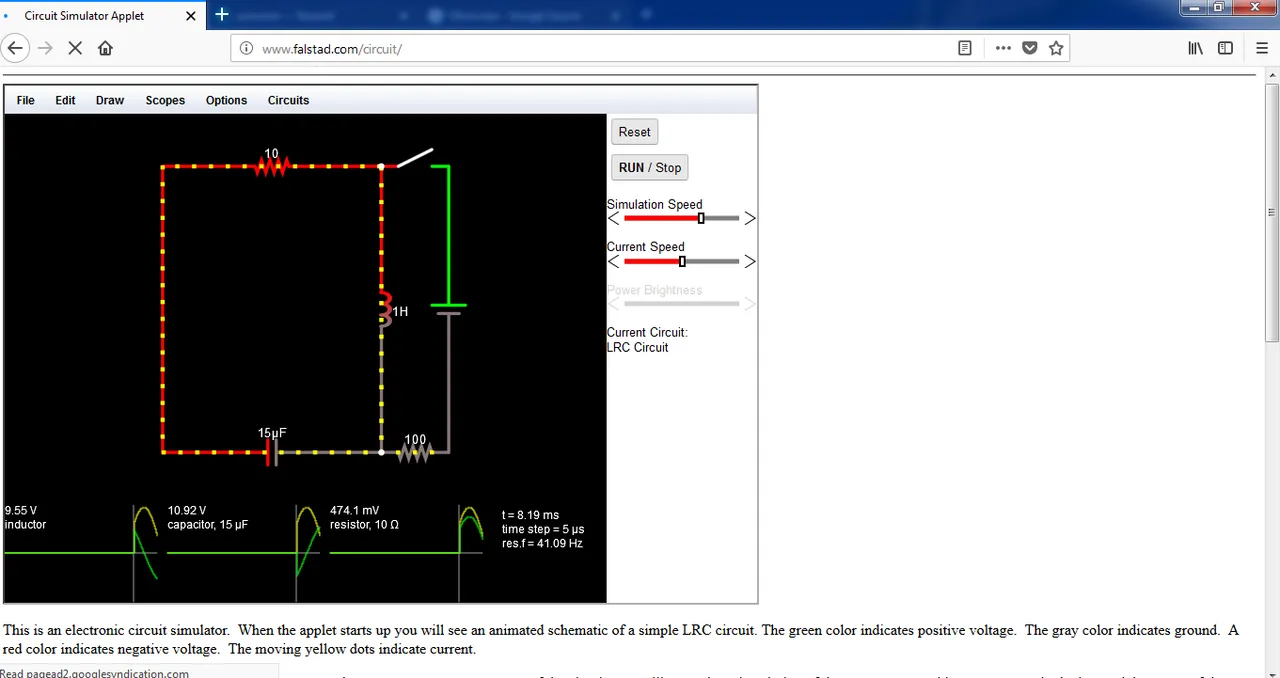
On the menu, select "circuit", and a drop down menu appears. Go to "basic circuits" select Ohm's Law. You can do the following steps mentioned.
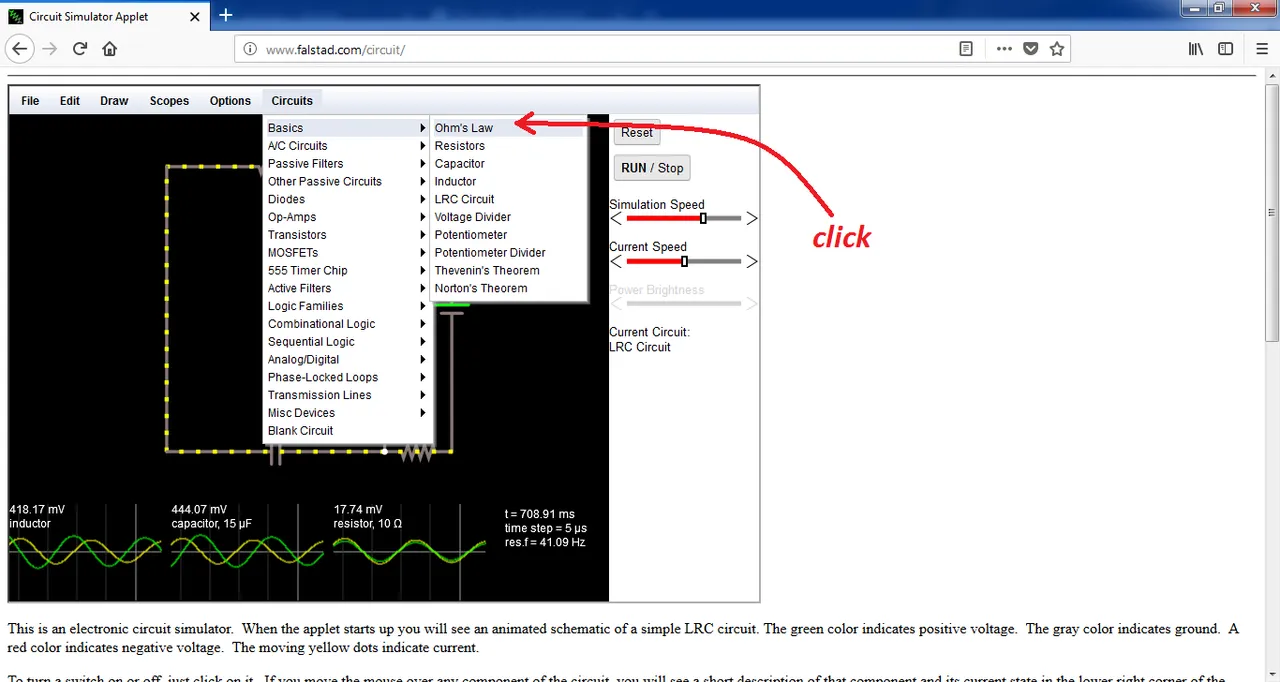
After clicking "Ohm's Law", the circuit below is shown.
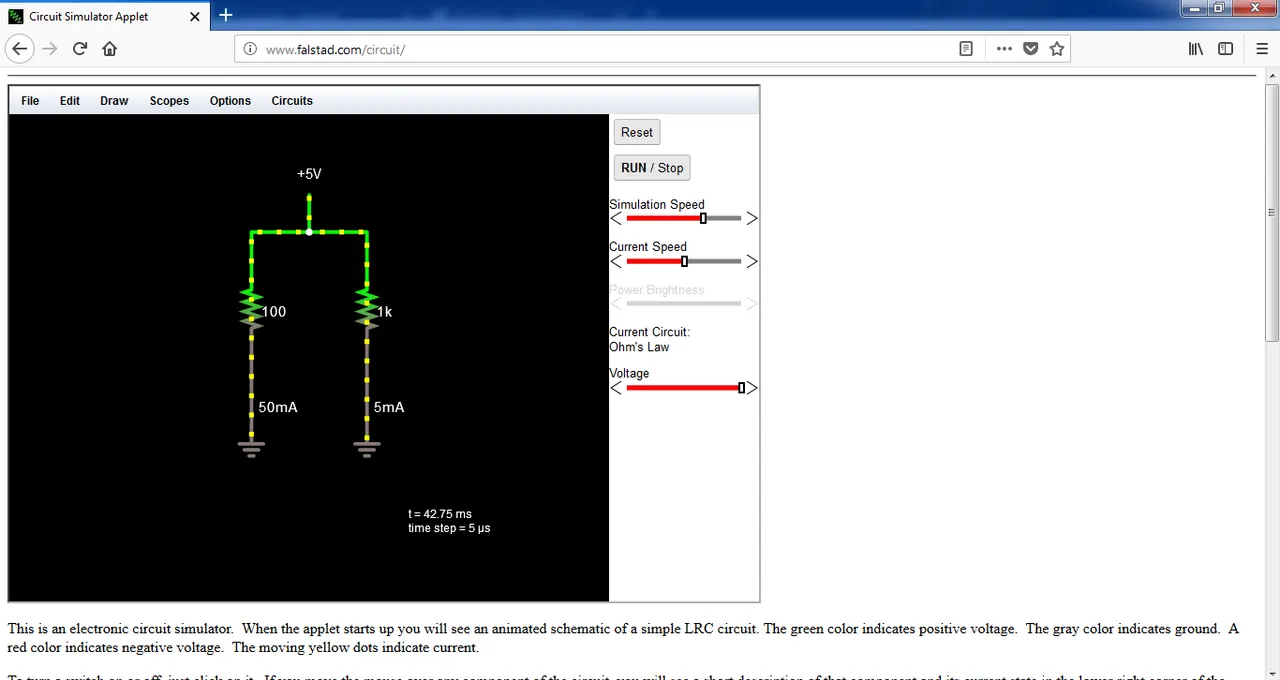
Now, lets continue on our discussion about Ohm's Law.
The circuit, as shown, has a voltage of 5 V, and has a connected resistor in parallel having 100 ohms and 1 kilo-ohms, respectively. The current are 50 mA and 5 mA, respectively. Going back to the formula: V = IR, both resistors experiences the same voltage since it is connected in parallel. Parallel circuit experience equal voltage but having proportionate current depending on the resistance value of the load(resistor).

Lets focus on the values of current in each component. The 100 ohms has a current of 50 mA. Using the formula V= IR, we can compute I = 5 V / 100 ohms = 50 mA. How about we change the values of 1 kilo-ohms resistr to 100 ohms. Let try to observe what happen to the values of current.

To change the resistance value of 1k resistor, double click the resistor an a edit component dialog box will appear. Type in the new value of reistance, as shown.Then click "Apply".

The new circuit now will have the same resistance value for the resistors.
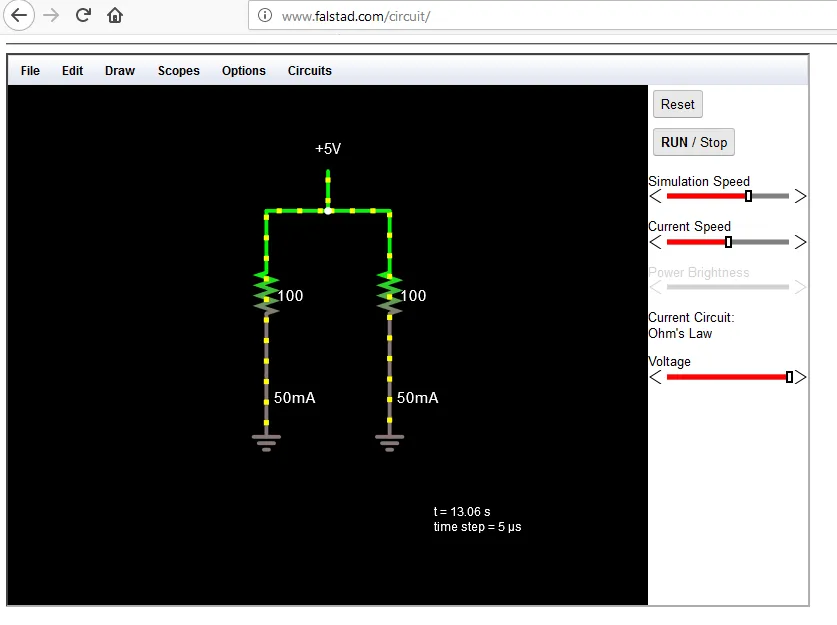
Now, lets continue on our discussion about Ohm's Law using the new configure circuit.
Both resistors right now has the same resistance as weel as current values. Thus, making and affirmation that the current in the circuit is proportional to the values of resistance. For example, the new circuit, both resistors the same values of current in 50 mA. SInce the resistors are equal, the current flowing through the system is simply divided by 2. The simulation affirms that current and resistance are inversely proportional because when we change the resistance value from 1k to 100, there is a substantial increase in the value of current from 5 mA to 50 mA. So any decrease of resistance value of the circuit, there is a corresponding proportionate amount of increase in the current flowing in the circuit.
Now let change the voltage from 5 V to 1 V in the new circuit. To change the value simply double click the source, and an edit component dialog box shows. Type in a new maximum value of 1 V. Then, click apply and close the dialog box.

Observe the current values in the circuit. What happen? When we change the voltage from 5 V to 1V, there is a 40 mA decrease i the current at each resistor. In this scenario, the voltage is directly proportional to the current hence the current decreases as the supply voltage decreases, as shown in the figure below,
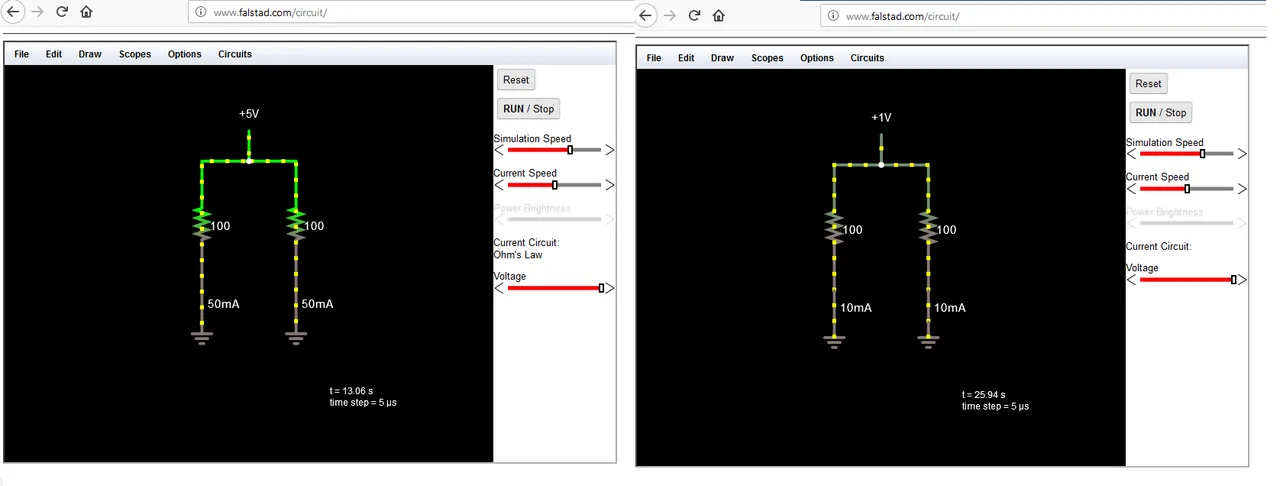
Best regards,
@juecoree
(snapshot credit: @juecoree )
Posted on Utopian.io - Rewarding Open Source Contributors